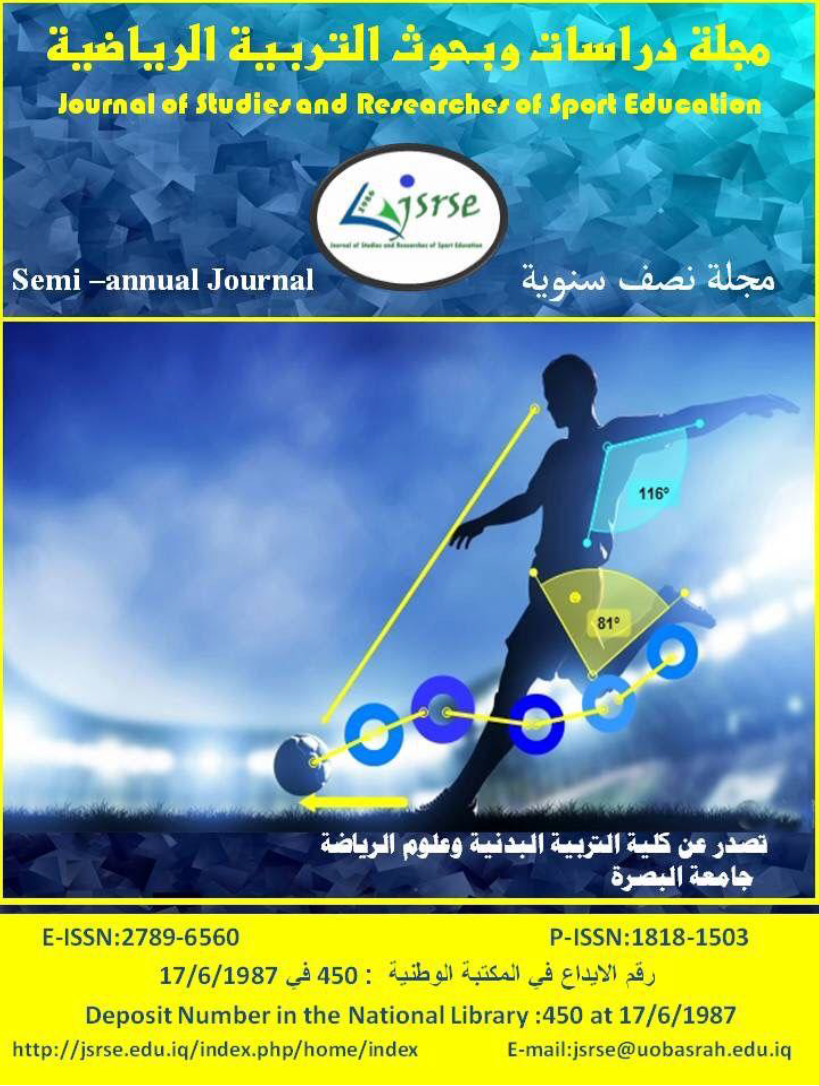The impact of competitive skill training in limited spaces on the development of speed and skill performance endurance in indoor futsal
Main Article Content
Abstract
The research focused on the importance of speed and performance endurance, with the research problem being the weakness in speed levels and the ability to sustain them until the end of the game, as well as how to deal with competitive pressure. The research objective was to investigate the impact of skill exercises in specific areas on the development of speed and skill performance endurance in indoor soccer. The researchers assumed that there was an effect of exercises subject to spatial constraints on the improvement of speed and skill performance. The study involved human subjects, specifically some indoor soccer players, and the spatial context was indoor sports halls. The researchers used an experimental methodology, and the research sample consisted of indoor soccer players. After processing the results, the researchers presented, analyzed, and discussed the research variables. The researchers concluded that there is a positive effect of the limited-space exercises developed by them. The recommendations emphasized the incorporation of exercises within specific spaces to enhance speed and skill performance endurance in indoor soccer
Article Details

This work is licensed under a Creative Commons Attribution-NonCommercial 4.0 International License.
References
Abd Al-qader, D. R. A. (2014). The Impact of Multimedia in the style of Leavning some basic skills of football for the students of physical Education. Al. Qadisiya Journal for the Sciences of Physical Education, 14(2 part (1)).
Akenhead, R., & Nassis, G. P. (2016a). Training load and player monitoring in high-level football: current practice and perceptions. International Journal of Sports Physiology and Performance, 11(5), 587–593.
Akenhead, R., & Nassis, G. P. (2016b). Training load and player monitoring in high-level football: current practice and perceptions. International Journal of Sports Physiology and Performance, 11(5), 587–593.
Al-Lami, A. H. (2010). Sports training for students of colleges of physical education (1st edition, p. 19). Dar Al-Diyaa for Printing and Publishing.
Allawi, M. H., & Rateb, O. K. (1999). Scientific research in physical education and self-esteem (p. 217). Arab Thought Publishing House.
Al-Rabadi, K. J. (2004). Sports Training in the Twenty-First Century (2nd edition, p. 64). Dar Wael for Publishing and Distribution.
Alsaeed, R., Hassn, Y., Alaboudi, W., & Aldywan, L. (2023). Biomechanical analytical study of some obstacles affecting the development of football players. International Journal of Physical Education, Sports and Health, 10(3), 342–346. https://doi.org/10.22271/kheljournal.2023.v10.i3e.2967
Anwar abd alkader Mashi. (2018). The effect of mental training on teaching some basic skills in women’s indoor football for second intermediate grade students aged (14-15) years in Basra Governorate Center. Journal of Misan Researches, 14(28). https://scholar.google.com/citations?view_op=view_citation&hl=ar&user=iuz1EtMAAAAJ&citation_for_view=iuz1EtMAAAAJ:UeHWp8X0CEIC
Hammadi, W. K., & Mushref, A. J. (2017). Special Exercises in the Reverse Technique and their Impact on the Performance of Human Wheel Movement in the Artistic Gymnastics for Men. University of Anbar Sport and Physical Education Science Journal, 3(15).
Hashem, Y. (2011). Endurance of the Skilled Performance of Football Players (1st edition, p. 13).
Khuraibet, R. (2014). The Selected Collection on Training and Sports Physiology (1st edition, p. 213). Al-Kitab Publishing Center.
Musharraf, A. J., & Al-Hadithi, K. I. S. (2022). The effect of exercises using the method of learning for mastery and performance simulation tools in developing the skills of standing on the hands and the human wheel for the floor movements carpet in the artistic gymnastics for men. Sciences Journal Of Physical Education, 15(5), 460–477. https://www.iasj.net/iasj/article/273682
Nowak, A. M., Marszalek, J., & Molik, B. (2022). Sports Performance Tests for Amputee Football Players: A Scoping Review. International Journal of Environmental Research and Public Health, 19(7), 4386.
Odeh, R. H. (2021). The effect of compound exercises on developing speed and endurance of skill performance in indoor soccer [Master’s thesis]. University of Basra.
Rasoul, T. H. A., & Muslim, A. (2019). Effect of Daniel’s model in teaching basic skills of football halls. Journal of Studies and Researches of Sport Education, 58.
Shahab, & Hussien. (2022). Standardization of the TOTAL Pulse Rate Test on Advanced Football Players. Journal of Studies and Researches of Sport Education, 32(2), 137–152. https://doi.org/10.55998/jsrse.v32i2.327
Taha, M. L. (1986). Characteristics of developing the accuracy of visual reaction to a moving target. The Second Scientific Conference of Faculties of Physical Education, Helwan University, 450.





 IASJ
IASJ CC-BY-4.0
CC-BY-4.0 turnitin
turnitin ISSN
ISSN DOAJ
DOAJ Crossref
Crossref GoogleScholar
GoogleScholar Orcid
Orcid